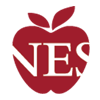
Educators: Five Things You Should Know About 403(b) Plans
Did you know that in the U.S., 46% of a teacher’s retirement income will come from personal savings, such as a 403(b) plan?
Along with their 403 (b) plan, many teachers rely on their state-funded pensions to fund retirement entirely; in reality, pensions may account for less than expected.
According to Pew Trusts, States only have 69% of the assets needed to support the promised pension benefits, resulting in some states modifying pension programs to reduce future benefits.
National Educational Services works with over 4,000 school districts. We can help teachers and their families navigate the State Pensions and the State Teacher Retirement Systems with a FREE Pension Projection. Find out more below!
Educators or public school employees, here are five things you should know about 403(b) plans:
1. A 403(b) can help to close your income gap in retirement.
A retirement income gap is a difference between the income you had on your last day before retirement and your actual retirement income. The challenge is that your state pension and Social Security may only replace 40% – 70% of your income, leaving you with a gap to fill. Rather than use personal savings or take on part-time work to close this gap, a 403(b) plan can step up to the plate.
2. 403(b) plans are specific to public school employees.
They work alongside your pension, helping to fill your income gap. Typically, 403(b) contributions are made pre-tax and grow tax-deferred, and you only pay taxes when money is withdrawn.
3. Easily “set it and forget it” with 403 (b) contributions pulled directly from your paycheck.
Making it easy to contribute to your retirement nest egg regularly. You can always change the number of your contributions.
4. 403(b) plans are portable. Educators have full control over your retirement savings, even if switching to a different school district.
It allows you to roll your savings into other employer plans or a traditional or Roth IRA if you decide to leave your job. Of course, you can also leave your account in place, and there it has the potential to continue growing tax-deferred, undisturbed.
5. 403(b) plans are flexible
Most plans allow you to customize to best match you. There are several options for savings vehicles within 403(b)s, which may include:
Mutual funds: allow access to professionally managed portfolios of equities, bonds, and other securities.
Annuities: allow you to accumulate savings before retirement and convert these savings to guaranteed income during retirement.
403(b) plans can be an excellent way to save for retirement, especially if your contributions are matched and the investment options are relatively low cost. 403(b) plans are generally similar in terms of rules to 401(k) plans, but 403(b) plans may offer more flexibility around withdrawals and catch-up contributions for educational and public employees.
Teachers, Are You In or Nearing Retirement with a State Pension? NES Can Answer Your Questions!
Find out your Pension Projection by answering a few questions below. Then, we will email you a complete projection of your pension benefits based on your projected retirement date.
Check out National Educational Services blog for more lessons on the State Teacher Retirement System and State Pensions. Also, learn more about 403 (b) plans and other retirement savings accounts on our blog.
We think the website deserves an ‘A’… And hopefully, you agree!
Let us know in the comments or contact us below.
Speak with a Counselor at National Educational Services!
Fill out the form below, and we will get in touch!
Need any help?
Since 1982, National Educational Services has been servicing the financial needs of educational employees.





